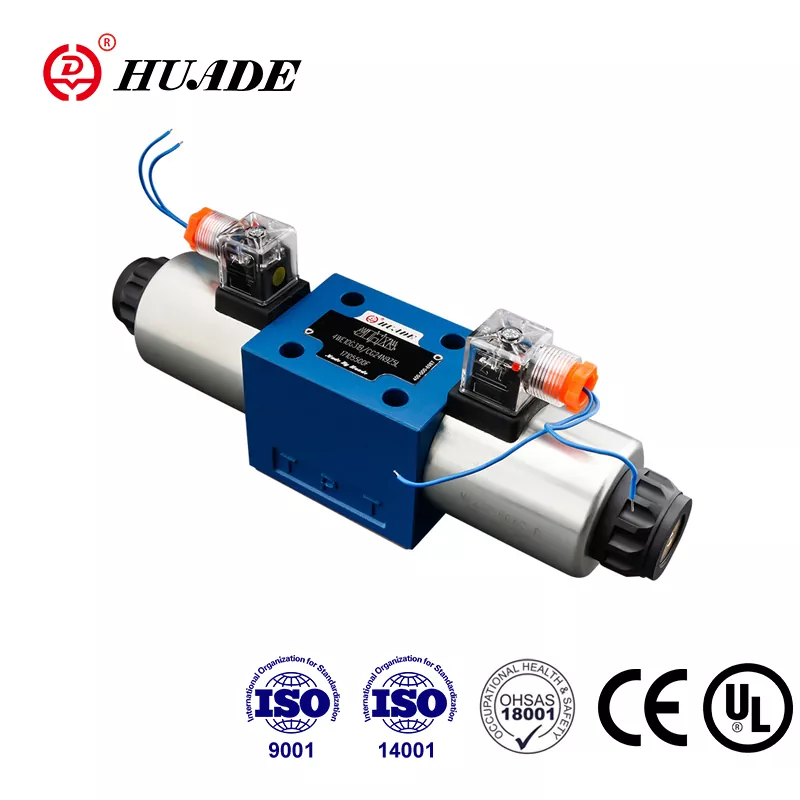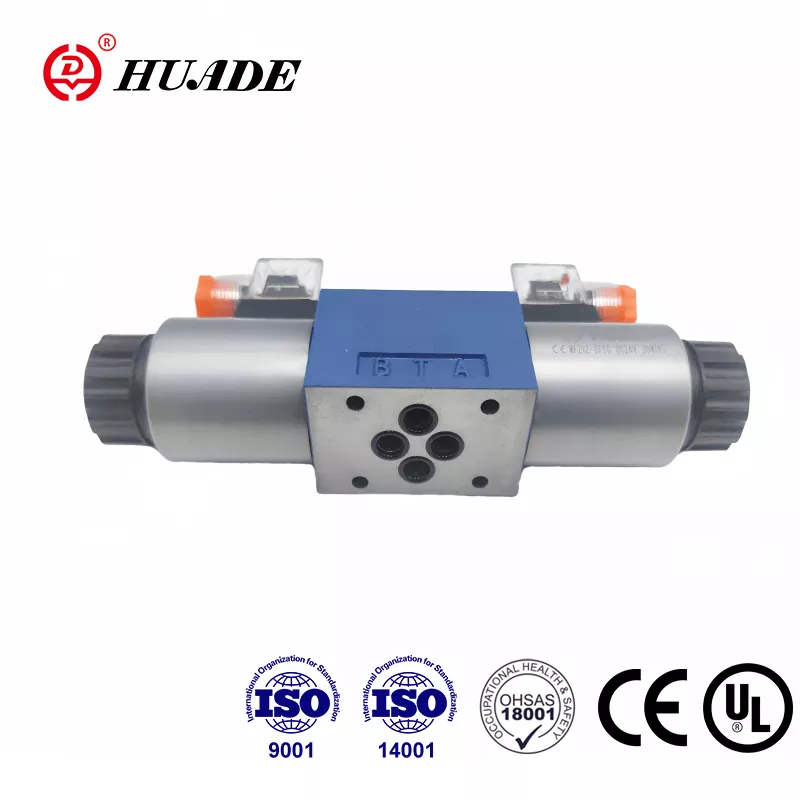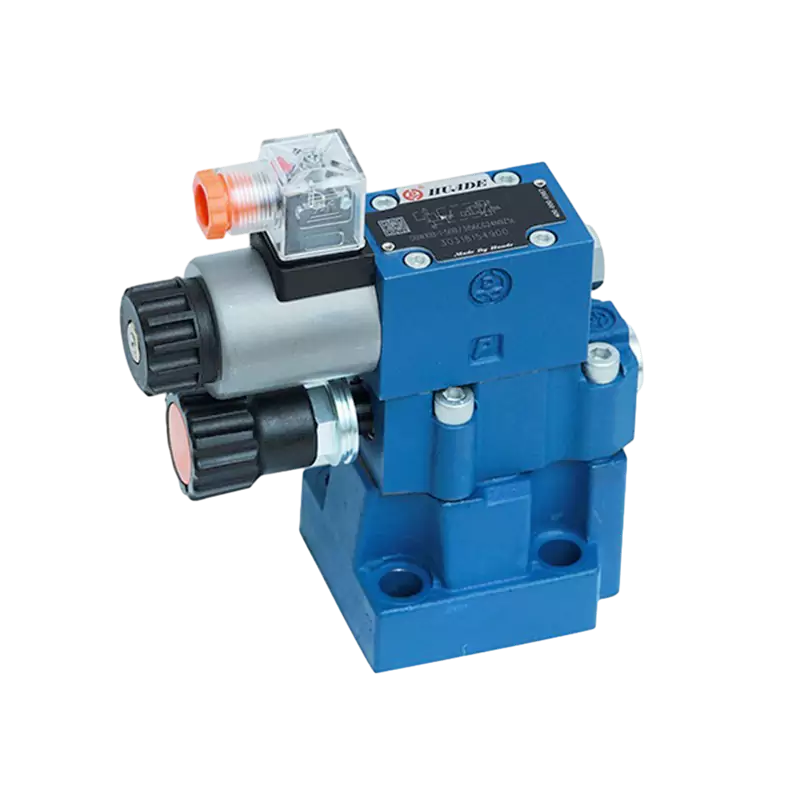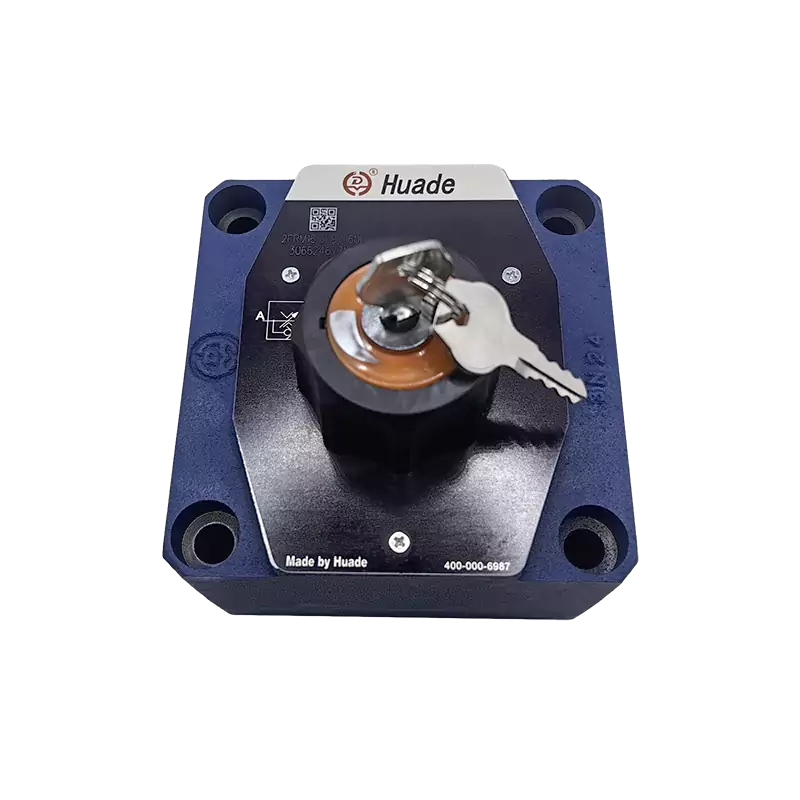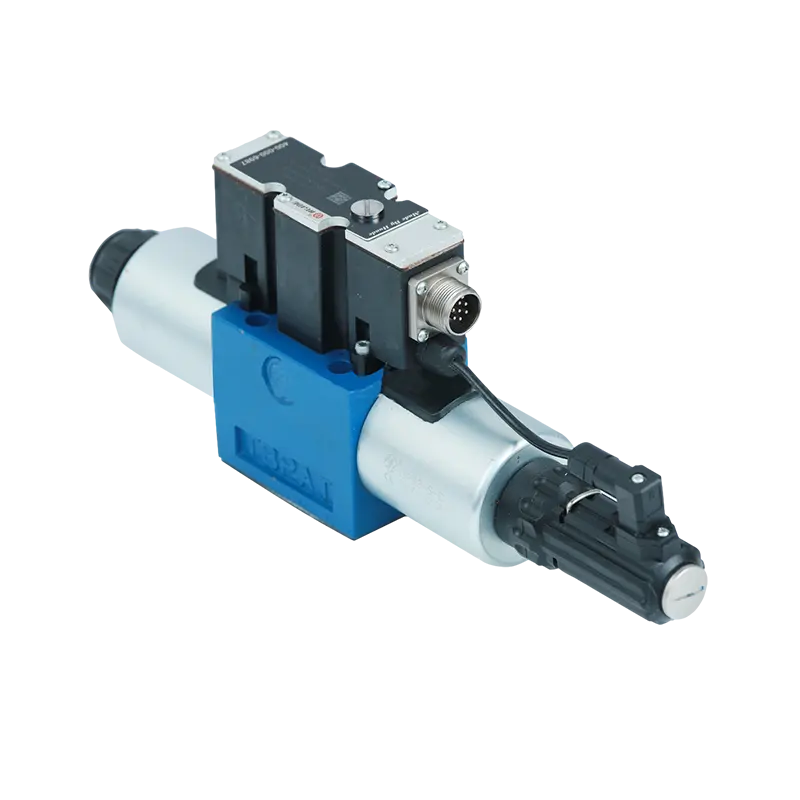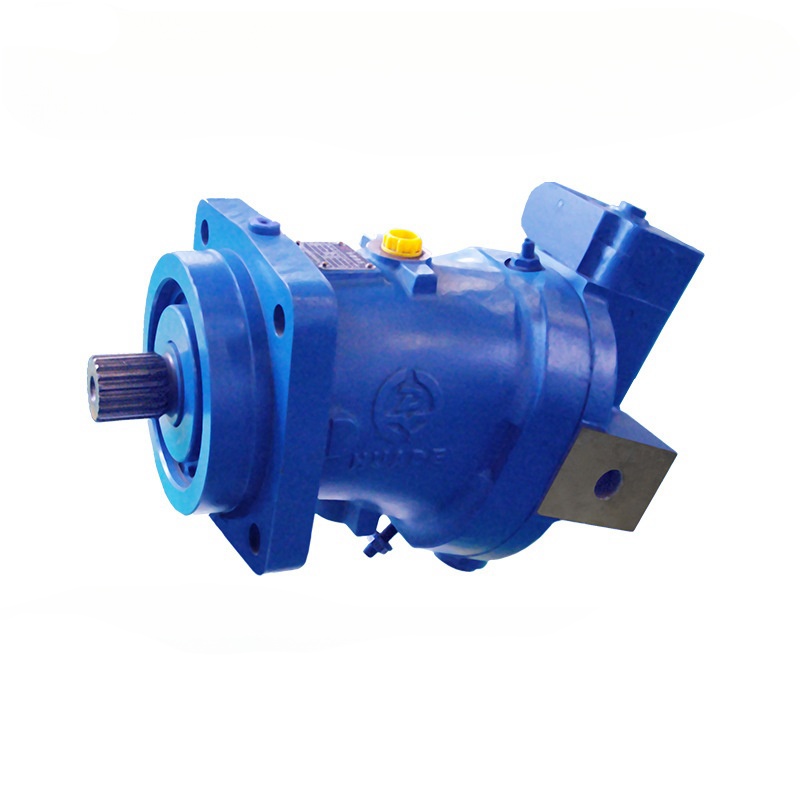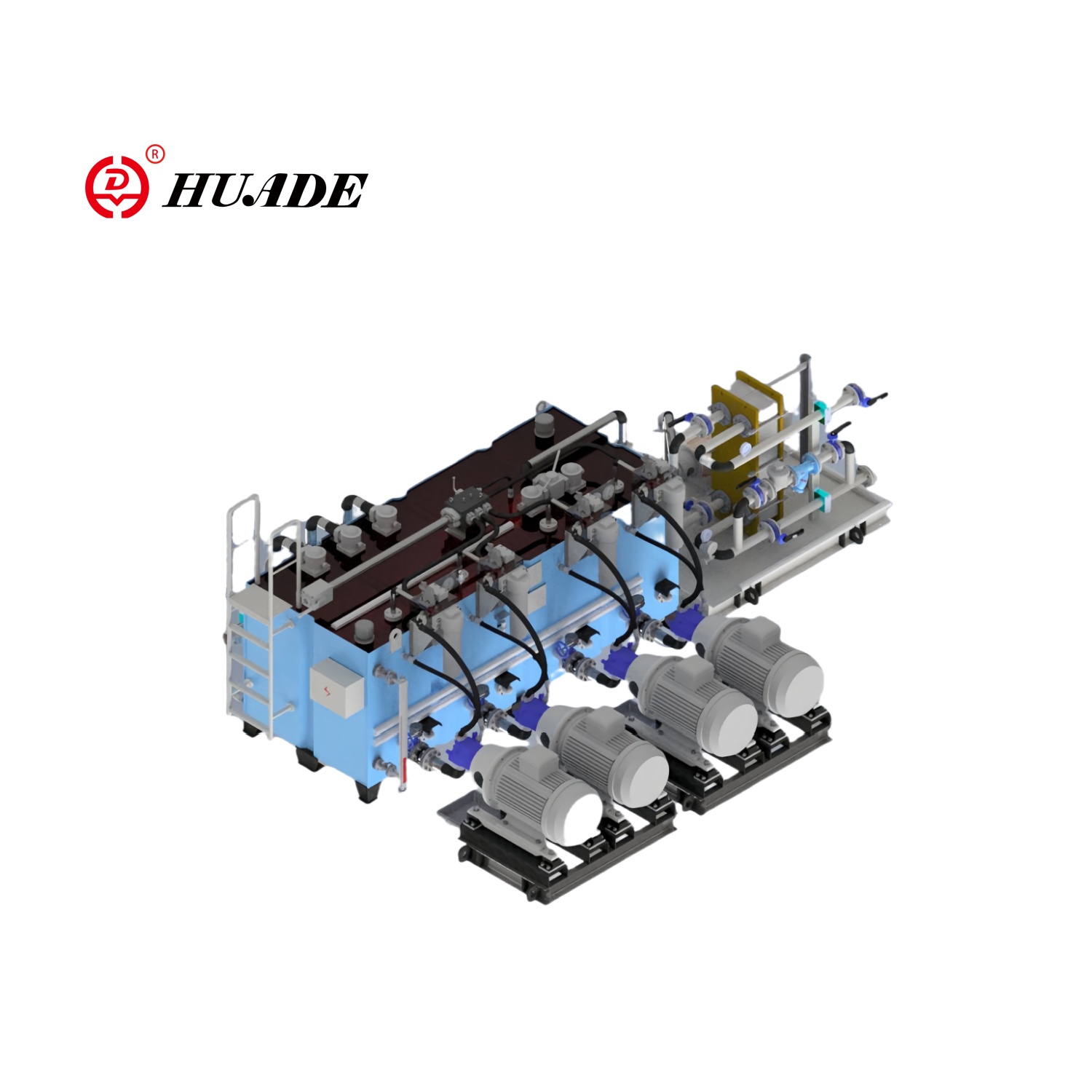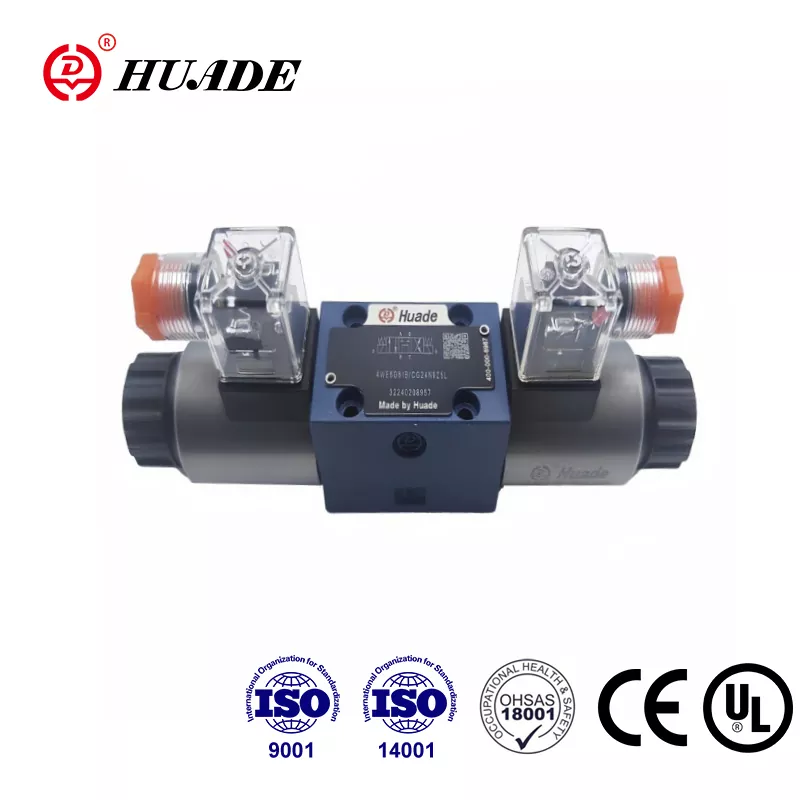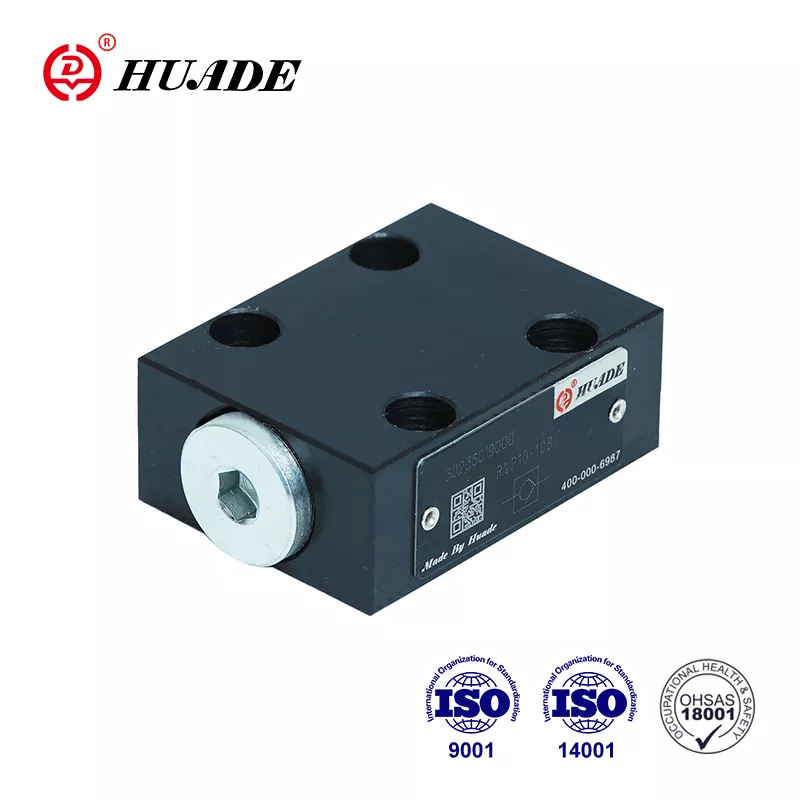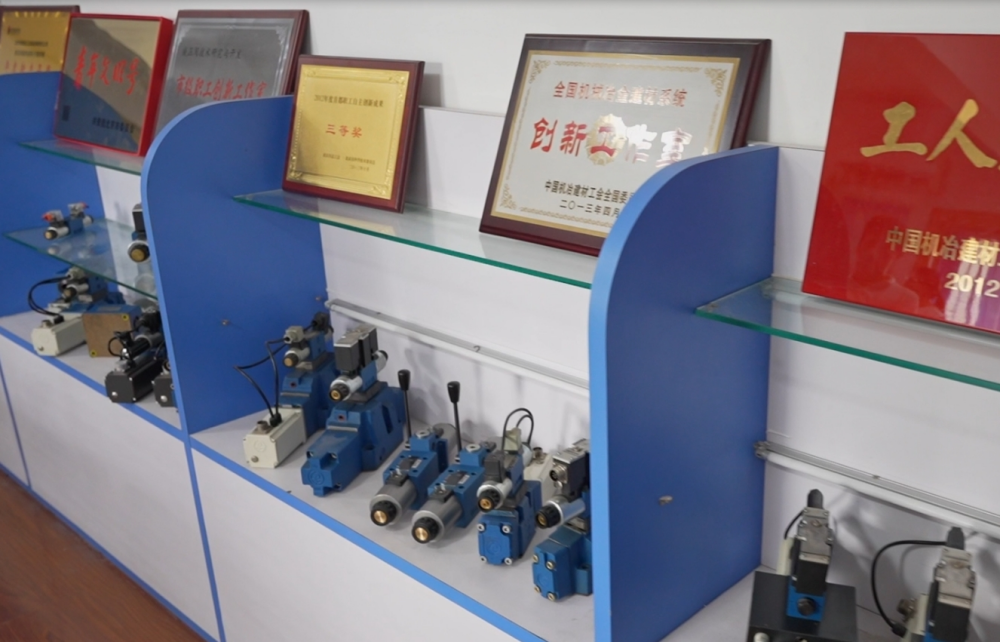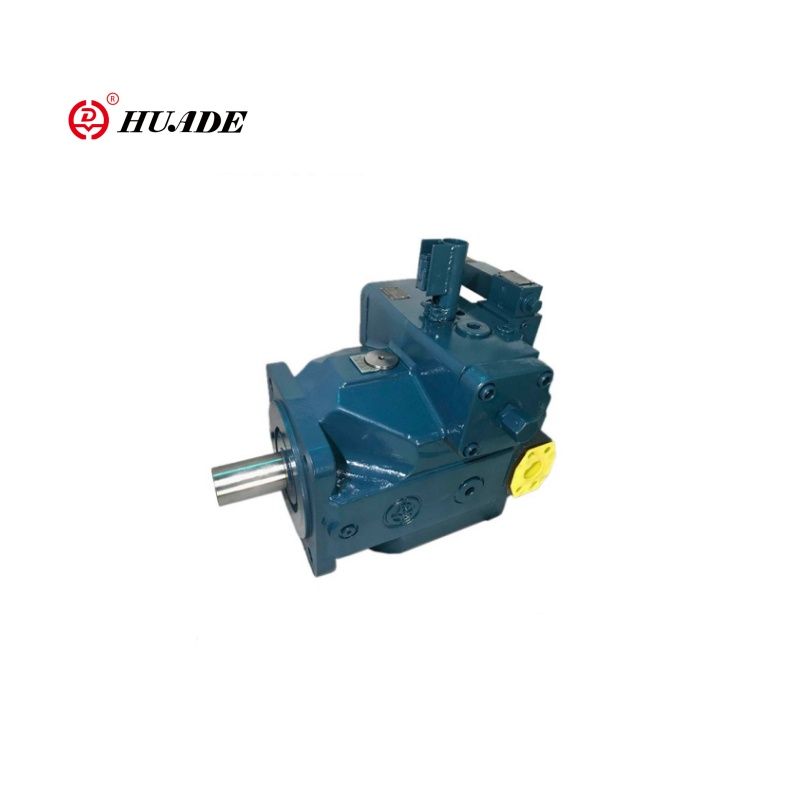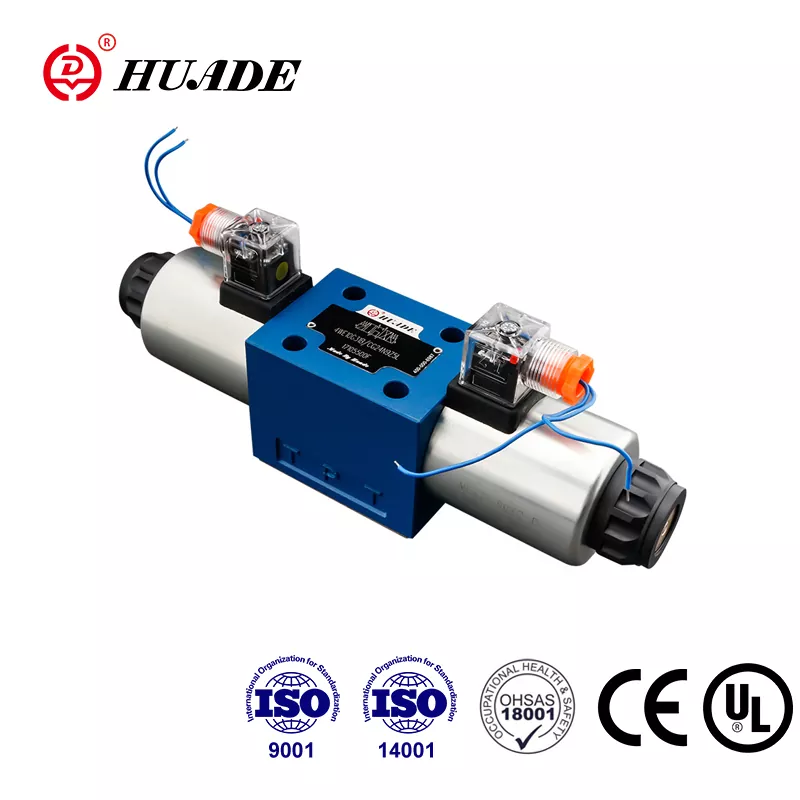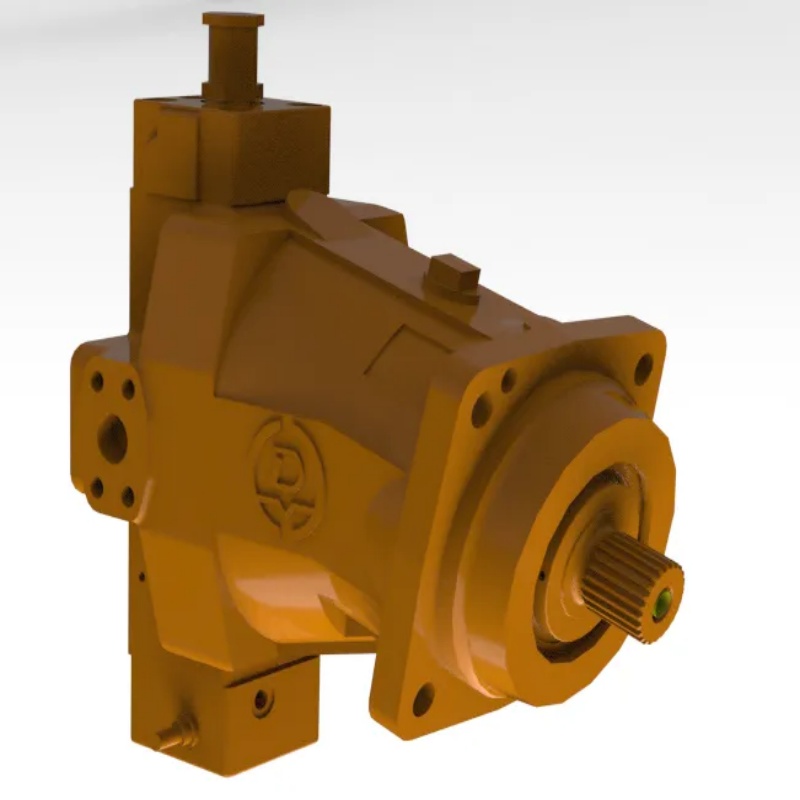When you're working with hydraulic systems in industrial settings, the directional control valve is essentially the traffic controller for your fluid power. The Bosch Rexroth 4WE 10 J Directional Control Valve is one of those workhorses that quietly keeps production lines running in factories around the world. This particular valve has been around for decades, and there's a good reason why engineers keep specifying it for their projects.
What Makes the 4WE 10 J Directional Control Valve Different
The Rexroth 4WE 10 J is what we call a solenoid-operated directional spool valve. Think of it as an electrically controlled switch that directs hydraulic oil where it needs to go. The "4WE" part tells us it has four main ports, and it's electrically operated. The "10" indicates it's a size NG10, which matches the CETOP 5 mounting standard. That "J" at the end is actually quite important because it defines how the valve behaves when it's sitting in its center position.
What sets this valve apart is its ability to handle serious pressure and flow. We're talking about maximum working pressures up to 350 bar, which translates to about 5,000 pounds per square inch. The DC voltage versions can push through 160 liters per minute, while the AC versions handle 120 liters per minute. Those numbers matter when you're trying to move heavy loads or operate large cylinders.
How the J-Pattern Center Position Works
The J spool configuration is probably the most distinctive feature of this directional control valve. When the valve sits in its center position with both solenoids turned off, all the main ports are blocked. The pump port (P), both work ports (A and B), and the tank return port (T) are completely isolated from each other.
This blocked center design serves a specific purpose. When you have a hydraulic cylinder holding a heavy load, you don't want that load creeping down while you're not actively controlling it. The 4WE 10 J keeps everything locked in place. The pump isn't sending oil anywhere, and the cylinder can't bleed back to the tank. This makes it particularly useful in applications like injection molding machines, where you need precise position holding during different stages of the molding cycle.
When you energize one of the solenoids, the spool shifts to connect the pump to one work port while the other work port opens to tank. Energize the other solenoid, and the connections reverse. It's straightforward hydraulics, but the blocked center gives you that static holding capability that some other spool patterns don't provide.
The Technical Details That Matter
The 4WE 10 J follows the ISO 4401-05-04-0-05 standard for its mounting interface. This standardization means you can swap it with other NG10 valves from different manufacturers if needed, though there are always details to verify. The mounting uses four M6 x 50 bolts torqued to 15 Newton-meters. You'll need a separate mounting plate, which Rexroth designates as something like a G 66/01.
The solenoids are what Rexroth calls "wet pin" design. The electrical coil sits in a housing that's exposed to the hydraulic oil, which helps with cooling and reduces noise compared to dry solenoids. These coils can be removed and rotated 90 degrees without disassembling the whole valve, which is convenient when you're tight on space or need to reorient the electrical connections. Common voltage options include 24 VDC and 120 VAC, though other voltages are available.
Response times are respectable for this type of directional control valve. When you apply power, the spool shifts in about 45 to 70 milliseconds. When you cut power, the spring returns it in 35 to 45 milliseconds. These aren't servo valve speeds, but they're adequate for most industrial machinery applications.
Where You'll Find This Valve Working
The 4WE 10 J shows up in a lot of different industrial equipment. Heavy machine tools use it for controlling work tables and spindles. Hydraulic presses rely on it for precise cylinder control. Injection molding machines are probably one of the most common applications, especially in the mold clamping circuits where you need to hold tons of clamping force without any drift.
In a typical injection molding setup, the directional control valve handles the opening and closing of the mold. During injection, the J-pattern center position locks the hydraulic oil in the clamping cylinder, maintaining constant pressure even though the pump might be doing other work. This prevents flash (unwanted plastic leaking from the mold) and ensures consistent part quality. When it's time to open the mold, one solenoid fires and the valve shifts, directing oil to retract the clamping mechanism.
The valve also appears in mobile equipment, construction machinery, and material handling systems. Anywhere you need directional control with good holding capability and reasonable flow rates, the 4WE 10 J is worth considering.
Understanding the Order Code
Rexroth uses a systematic coding system for their directional control valves, and understanding it helps you get exactly what you need. A typical complete model number might look like 4WE 10 J3X/CG24N9K4, with the Rexroth part number R900589988.
Breaking that down: The "4" confirms four main ports. "WE" means it's an electrically operated directional spool valve. "10" is the NG10 size rating. "J" identifies the spool pattern with blocked center. "3X" or "5X" indicates the series, with 5X being the current production series. The letters and numbers after the slash specify details like solenoid voltage (G24 means 24 VDC), seal material, and various options.
If you see a "V" in the suffix, that indicates FKM seals instead of the standard NBR seals. You'd want FKM if you're using phosphate ester fluids or operating at higher temperatures. The standard NBR seals work fine with mineral hydraulic oils in normal industrial temperature ranges.
Fluid Requirements and Filtration
The 4WE 10 J is designed primarily for mineral-based hydraulic oils, though it can handle phosphate esters with the right seal material. Viscosity range is fairly broad, from about 2.8 to 380 square millimeters per second, with a nominal operating viscosity around 37 at 55 degrees Celsius. Operating temperature should stay between minus 20 and plus 50 degrees Celsius for the ambient environment.
Here's where a lot of maintenance headaches start: fluid cleanliness. The clearances inside a directional control valve are measured in microns. We're talking gaps between three and thirteen microns in critical areas. A human hair is about 70 microns for comparison. If you let contamination get into your hydraulic oil, particles can wedge in these clearances and cause the spool to stick.
Rexroth recommends filtration at 10 microns or better. That's not a suggestion you should ignore. A stuck spool means your valve won't shift, or worse, it might shift and not return. With AC solenoids particularly, a stuck spool can lead to coil burnout because the solenoid is designed for intermittent duty, not continuous holding. Following something like NAS 1638 Class 9 cleanliness standards will save you grief down the road.
Common Issues and Troubleshooting
Most problems with the 4WE 10 J trace back to three areas: contamination, electrical faults, or mechanical damage. The good news is that Rexroth includes a manual override on these valves, which gives you a diagnostic tool.
If your directional control valve isn't shifting when you energize the solenoid, try the manual override first. Push the override pin and see if the valve shifts mechanically. If it shifts manually but not electrically, you're looking at an electrical problem. Check your voltage at the solenoid connector, verify your wiring, and test the coil resistance. If the valve won't shift even manually, the spool is stuck, usually from contamination.
Contamination problems announce themselves in various ways. Sometimes the valve shifts but doesn't return to center properly. Other times it might shift slowly or not at all. Internal leakage is another symptom, where you lose pressure or see cylinder drift even with the valve supposedly in the locked center position. These issues typically mean contamination has scored the spool or valve body, creating leak paths.
Electrical problems are usually straightforward. No voltage means check your wiring and control system. Wrong voltage or polarity (for DC solenoids) means the valve might not shift reliably. Blown coils show up as open circuits or very low resistance. Coil replacement is simple enough since they just thread out of the valve body.
Mechanical damage is less common but can happen. Broken return springs will prevent the spool from centering. Damaged solenoid pins won't push the spool properly. These usually require valve replacement or rebuild rather than simple fixes.
Installation Considerations
Mounting a 4WE 10 J properly starts with a clean, flat mounting surface. The valve bolts to a subplate or manifold using those four M6 bolts we mentioned earlier. Surface flatness matters because the O-rings that seal each port have to compress evenly. Any warping or debris can create leak paths.
Torque those mounting bolts to 15 Newton-meters, no more, no less. Too little and you might get external leaks. Too much and you risk distorting the valve body, which can cause the spool to bind. Use a torque wrench, not a guess.
Electrical connections need attention too. Make sure you're connecting to the correct voltage terminals. The valve typically has a terminal strip or connector for each solenoid, plus a ground connection. That ground connection is mandatory for safety and can also reduce electrical noise in your control system.
The directional control valve should be oriented with the solenoids pointing up when possible. This helps prevent moisture accumulation in the electrical connections. If you must mount it differently, consider adding boots or covers to protect the electrical terminals.
Comparing Alternatives
The 4WE 10 J isn't the only NG10 directional control valve available. Parker makes the D3W series, which offers similar specifications. Eaton Vickers has the DG4V-5 series. HYDAC produces NG10 valves that can substitute in many applications. So why might you still choose the Rexroth?
Flow capacity is one factor. The 4WE 10 J's 160 liters per minute in DC versions edges out some competitors. Response time is competitive at 45 to 70 milliseconds for energizing. The wet pin solenoid design with removable, rotatable coils offers practical maintenance advantages. Rexroth also offers a wider variety of spool patterns and options within the 4WE 10 series, giving you more flexibility to match your exact needs.
Price-wise, these valves are in the same ballpark. You might pay anywhere from 950 to 1,050 US dollars for a common configuration. That pricing reflects industrial-grade quality and the engineering that goes into maintaining tight clearances and reliable performance.
The real differentiation often comes down to what you're already using in your system. If your equipment is already built around Rexroth components, sticking with the 4WE 10 J maintains consistency in parts inventory and technician familiarity. If you're working with Parker or Eaton systems, their equivalents might integrate more smoothly.
Sourcing and Availability
Finding a 4WE 10 J is generally straightforward. Common configurations like the R900589988 (24 VDC version) are usually in stock at industrial distributors. Rexroth has an official online store where you can purchase directly. Industrial supply platforms like Alibaba offer both genuine Rexroth valves and compatible alternatives, though you need to verify what you're actually getting.
Lead times vary depending on configuration. Stock items might ship within a few days. Special orders with unusual options could take several weeks. If you're maintaining critical equipment, keeping a spare valve on hand makes sense given the relatively low cost compared to downtime.
Be aware that older series like the 3X have been discontinued. If you're replacing a 3X series valve, you can upgrade to the 5X series, which is the current production version. The mounting interface and basic operation remain the same, though there might be minor differences in options or performance specifications.
Making It Last
Getting maximum life from your directional control valve comes down to a few key practices. First and most important: maintain clean hydraulic fluid. That 10-micron filtration we talked about earlier isn't optional if you want reliable service. Change your filters regularly and watch for pressure drop across the filter element.
Second, verify that the J spool pattern actually matches your application. If you're using a fixed displacement pump without an unloading valve, the blocked center might cause problems. The pump will deadhead against the blocked ports, creating heat and wasting energy. A J spool works best with variable displacement pumps or systems that have separate unloading capability.
Third, use the manual override during diagnostics, not as a regular operating method. Those override pins are there for troubleshooting and maintenance, not daily production use. Repeatedly hammering on the override can damage the mechanism over time.
Fourth, pay attention to your system's operating pressure and flow. Just because the 4WE 10 J can handle 350 bar and 160 liters per minute doesn't mean you should run it at those limits continuously. Operating in the middle of the performance envelope rather than at the extremes will extend service life.
Finally, when you do have a failure, don't just throw in a new solenoid coil without investigating why it failed. Coils don't usually fail on their own. They fail because the spool is stuck and the coil overheats, or because of electrical problems in your control system. Fix the root cause, not just the symptom.
The Bottom Line
The Rexroth 4WE 10 J directional control valve represents decades of industrial hydraulics evolution. It's not fancy or high-tech by today's standards, but it does its job reliably when properly applied and maintained. The J spool pattern with blocked center gives you positive load holding. The NG10 size handles substantial flow and pressure. The wet pin solenoid design balances performance with practical maintenance access.
If you're designing a new hydraulic system that needs directional control with holding capability, or if you're replacing a worn valve in existing equipment, the 4WE 10 J deserves consideration. Just make sure you're specifying the right series (5X for current production), the correct solenoid voltage, and appropriate seal material for your fluid. Pay attention to filtration from day one, and you'll get years of reliable service from these valves.
Understanding how your directional control valve works and what it needs to stay healthy isn't complicated. It just requires paying attention to the details that matter: clean fluid, proper voltage, correct application, and regular maintenance. Get those right, and the 4WE 10 J will keep your hydraulics flowing where they need to go, when they need to go there.
